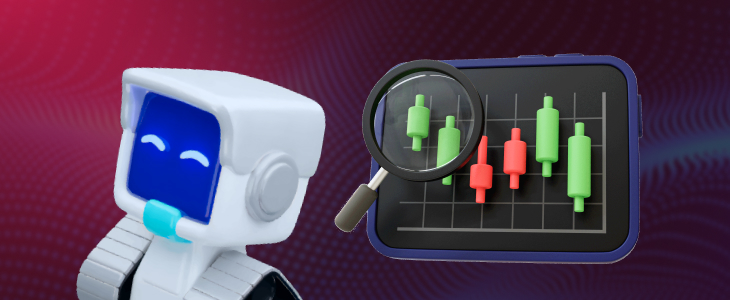Currently, we are witnessing a hyper-connected and fast-moving market where commercial liquidity is the prominent source of trading. Especially for institutional and retail traders, identifying liquidity looking and where it might shift next, can be the difference between loss and profit.
Additionally, the pursuit is mainly popular as liquidity hunting, which has become more complicated and competitive than it was in its previous state. You can also refer to the contribution of Artificial Intelligence as a tool for transformation. Moreover, this factor is redefining how traders on various platforms can interpret, analyze, and anticipate market behavior, allowing them to use it to their advantage.
In this article, we will discuss liquidity hunting with AI and explore how it can offer more innovative and efficient market insights for traders, as well as the benefits it provides.
How Do You Define Liquidity Hunting?
Liquidity hunting is a tactical search for areas in the market where liquidity is available. Here, you will generally notice a high concentration of purchase and sell orders. Additionally, these areas sometimes serve as a point of attraction for price action.
Moreover, it primarily draws market participants into areas where larger organizations place orders that will generally fulfill various trading operations. Additionally, traders in the forex market mainly focus on positioning themselves ahead of upcoming moves.
For instance, they generally do it by detecting where the liquidity pools exist. Nonetheless, it does not matter whether they are stop-loss clusters, resting limit orders, or areas of past market activity. Furthermore, the conventional liquidity hunting also depends on various tools.
For example, you can refer to order flows inspection, volume profile, price action patterns, and many more. Despite being effective, the following methods sometimes fall short in advanced markets, as evidenced by volume fragmentation across multiple venues.

The AI Benefits in Liquidity Detection
Al has demonstrated its contribution in various areas of trading, including platforms like MetaTrader and CFD trading. Additionally, AI has access to multiple facilities for liquidity detection. For example, you can refer to high-quality data, order book snapshots, previous price actions, and many more.
Moreover, with these facilities, AI models can synthesize data at a speed and scale that is far beyond human capacity. Nonetheless, here are some of its advantages, you can follow:
Pattern Detection in High-Frequency Data
Various markets mainly generate terabytes of microstructure data daily. Also, this data is primarily hidden within the number of behavioral patterns. For instance, you can refer to how prices behave near round numbers or how volume enhancements will lead up to the breakouts.
Moreover, there are ML (Machine Learning) algorithms alongside different learning models like CNNs (Convolution Neural Networks) or transformers. These facilities can identify the non-linear and subtle connections between the volume and price data.
As the AI models mainly train on previous trade and order book data, they can detect similar liquidity areas, such as:
- Collection of stop orders near the swing highs and lows.
- Iceberg sequences that repeat at certain price levels.
- Hidden assistance and resistance areas rely on volume clustering.
Forecasting Modeling or Liquidity Changes
You cannot identify all liquidity in the order book, as some of it lies latent. Additionally, specific orders will only be noticeable when the value reaches a predetermined level. Also, the AI models can forecast where this latent liquidity might position itself by analyzing various factors, such as:
- Previous responses to the price levels.
- Time-of-day liquidity dynamics.
- Behavioural shifts during new events.
NLP (Natural Language Processing) for News And Sentiment Impact
Sentiment changes can instantly modify the liquidity conditions. Also, a surprise deadline can extinguish the purchase-side interest or flood the trading market with sell orders. Moreover, the AI-driven Natural Language Processing systems can analyze various factors in the trading market.
For example, you can refer to parsing financial and economic news, tweets, and earnings call transcripts in real-time to inspect the market sentiment. Additionally, by integrating Natural Language Processing outputs with technical market data, AI can forecast liquidity shortages or surges.
The scenario is noticeable in various commercial asset classes. For example, they are mainly equities, forex, crypto, and many more, where narrative and sentiment sometimes drive short-term flows.
Concurrent Applications of AI in Liquidity Hunting
Whether you are an investor or a forex market trader, there are several real-time applications of AI in liquidity hunting you can notice, and here are some examples:
SOR (Smart Order Routing) And Execution Algorithms
Institutional traders already implement AI SOR (Smart Order Routing). Additionally, it primarily directs trades towards dark pools or exchanges where liquidity is optimal. Moreover, these functions continuously adapt to performance execution and adjust strategies to reduce the slippage.
Liquidity Visualizations And Heatmaps
Artificial intelligence can develop dynamic liquidity heatmaps that can update themselves in real-time. Also, these visualizations indicate the probable order clustering areas or the stop-loss accumulation. Furthermore, it can also guide traders to zones where opportunities and volatility are likely to increase.
AI-Driven Strategy Creation And Backtesting
Backtesting liquidity-driven tactics conventionally requires factors such as high-resolution and clean data, as well as domain proficiency. Moreover, the AI models can streamline the process by several factors:
- Identifying recurring liquidity events.
- Calculating tactical robustness across regimes.
- Adjusting strategies dynamically in response to the evolving market microstructure.

In Conclusion
Liquidity hunting has long been a strategy employed for various purposes, including anticipation, insight, and timing. Additionally, in an infrastructure where time is a critical factor and hidden sequences drive platforms, relying solely on human efforts or intuition is no longer sufficient.
Moreover, AI can help traders make faster, smarter, and more informed decisions by identifying patterns that lie beyond the conventional reach of analysis. Nonetheless, it does not matter whether you are creating an execution algorithm or detecting stop-run zones; AI can help you cover all these areas without much inconvenience.
The internet is full of online trading facilities that promise robust financial benefits, but only a handful are trustworthy. However, our FXcess platform has garnered positive reviews from many clients for its services in trading assets, commodities, and affordable brokers, which can make your trading journey worthwhile.
FAQs
1. How do you explain liquidity hunting?
– It is mainly a practice of detecting areas in the market where a bigger volume of buy and sell orders will get executed.
2. Why is liquidity crucial in trading?
– Liquidity is crucial in trading for many reasons, like volatility, slippage, order execution, etc.
3. How can AI help with liquidity hunting?
– AI can help with liquidity hunting by analysing order book data and recognising patterns in price, volume, and volatility.
4. How many types of AI models can you implement in liquidity detection?
There are a variety of AI models you can implement in liquidity detection, such as deep learning models, Machine Learning, Natural Language Processing, etc
Disclaimer:
This information is not considered as investment advice or an investment recommendation, but instead a marketing communication. FXCess is not responsible for any data or information provided by third parties referenced, or hyperlinked, in this communication.
